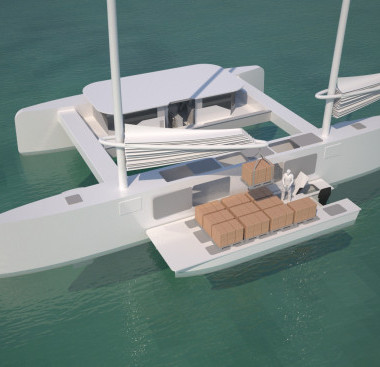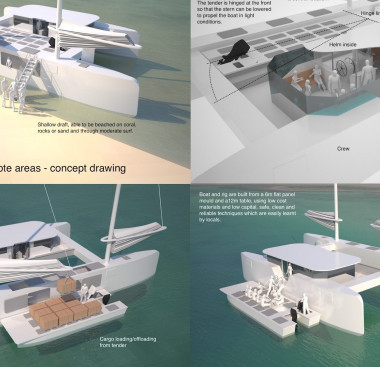A Sailing Cargo Ferry
Harryproa has an interesting cargo proa concept: an inter-island ferry/cargo vessel for East Timor. The brief calls for 10 tons of cargo and capacity for 25 passengers, primarily (but not only) wind propelled, a crew of 2, shallow draft and beach-able, built and repaired by local semi/unskilled labor with minimal equipment and easily obtained materials, and a large tender.
Naturally, Harryproa has determined that a harryproa is the best platform with which to achieve the above goals.
The loads on the structure do not alter appreciably regardless of whether the long hull is loaded or not. The boat will sail faster when empty, but the loads on the beams and rig are unchanged, saving structural weight.
A point I agree with, see The Case for the Cargo Proa. The solutions presented here are creative and thought-provoking, what do you think?
Harryproa: Sailing Cargo Ferry
Much thanks to Paul C. for the submission.




Micheal,
Thanks for publishing it. Since we drew it, the response has been huge, there is definitely a big demand for this type of transport all over the Pacific.
We have made some serious weight and cost savings as we went down the design spiral and some big improvements on cargo handling after talking to the end users. Next steps are survey approval and operating logistics with the short term goal of a setting up a harryproa shipping company.
regards,
Rob Denney
http://www.harryproa.com